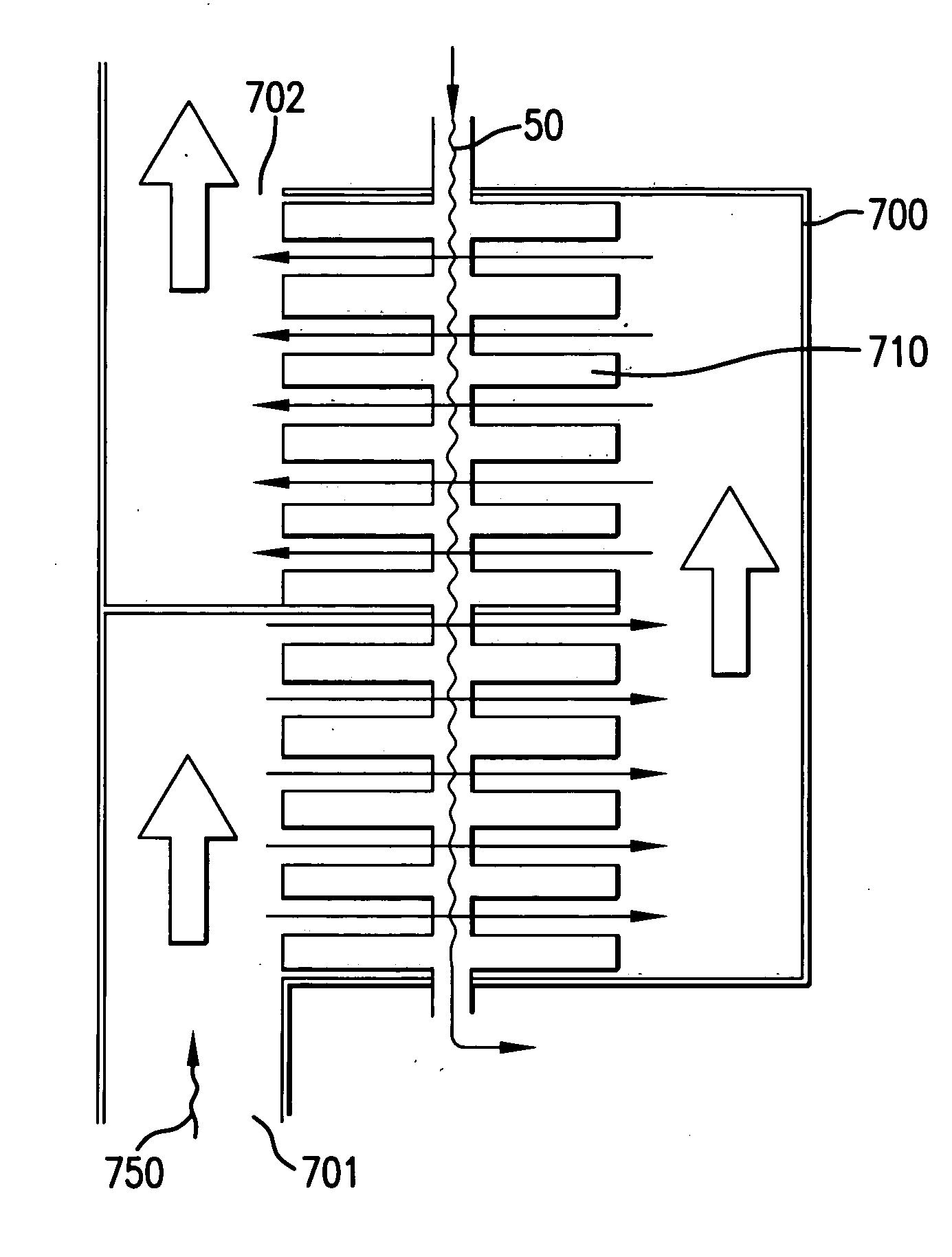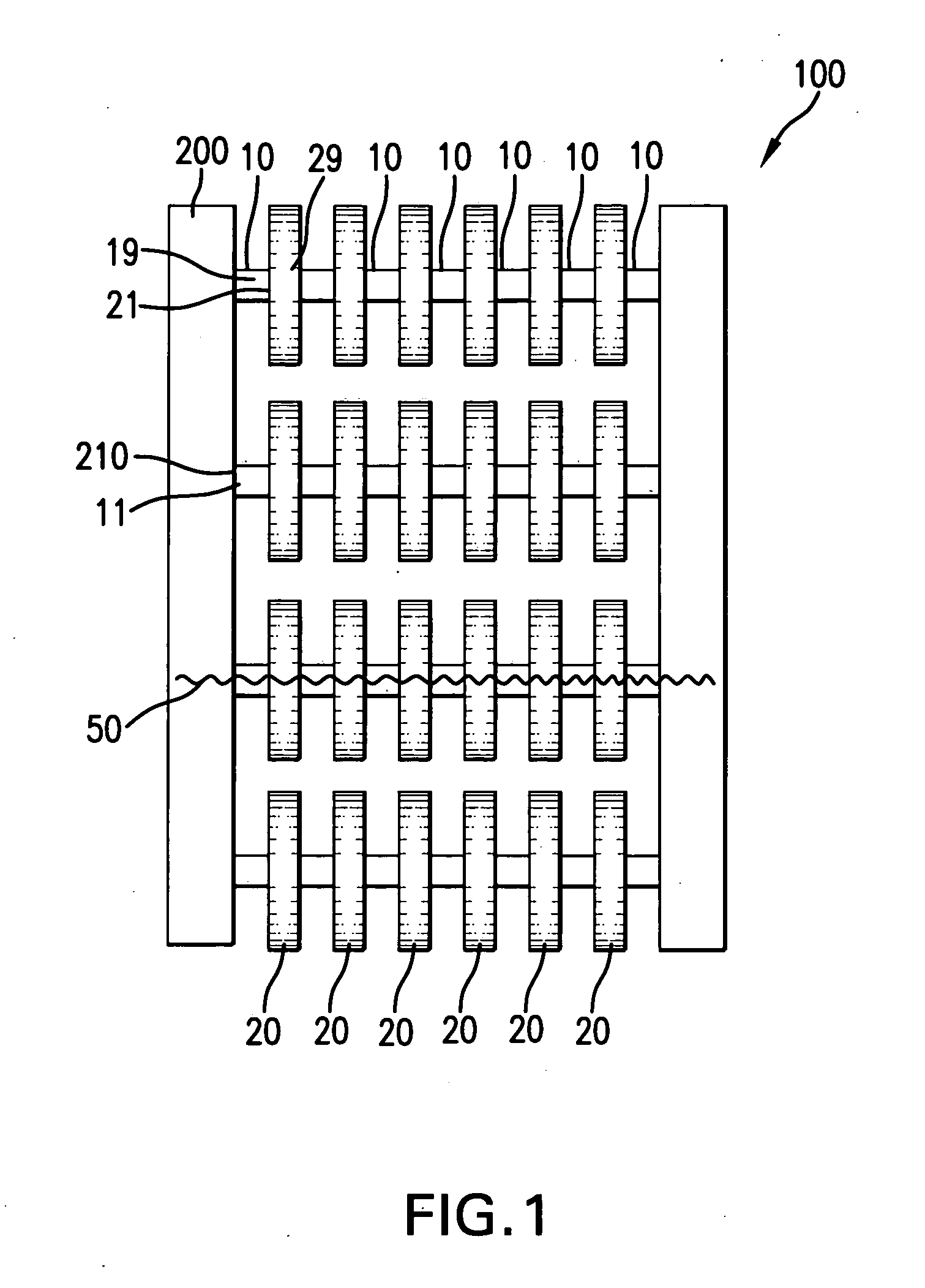Tube for a heat exchanger
a heat exchanger and tube technology, applied in the field of tubes and chamber apparatus, can solve the problems of reduced pressure resistance, limited heat exchanger efficiency of pipes, and increased damage of thin tubes, so as to increase the surface area, enhance heat exchange capabilities, and increase the effect of surface area
- Summary
- Abstract
- Description
- Claims
- Application Information
AI Technical Summary
Benefits of technology
Problems solved by technology
Method used
Image
Examples
Embodiment Construction
[0035]Referring to the drawings and in particular FIG. 1, an embodiment of a heat exchanger 100 is shown. The heat exchanger 100 includes a manifold 200 matingly engaged to free ends of tubes 10 that are brazed together to redirect chambers 20. As shown in FIG. 1, the redirect chambers 20 have a greater fluid capacity than the tubes 10. Heat exchange media 50 flows from the outlet 210 of the manifold 200 into the inlet 11 of the tube 10. The heat exchange medium 50 passes through the outlet 19 of the tube 10 into the inlet 21 of the redirect chamber 20. The heat exchange media 50 then flows out an outlet 29 of the redirect chamber 20. The process of going from a tube 10 to a redirect chamber 20 may repeat several times until the heat exchange media 50 is received by another manifold. There may also be several rows of the tube 10 and redirect chamber 20 combinations. Also, one embodiment may allow for just one tube 10 and one redirect chamber 20. Throughout the transport of the heat ...
PUM
 Login to View More
Login to View More Abstract
Description
Claims
Application Information
 Login to View More
Login to View More - R&D
- Intellectual Property
- Life Sciences
- Materials
- Tech Scout
- Unparalleled Data Quality
- Higher Quality Content
- 60% Fewer Hallucinations
Browse by: Latest US Patents, China's latest patents, Technical Efficacy Thesaurus, Application Domain, Technology Topic, Popular Technical Reports.
© 2025 PatSnap. All rights reserved.Legal|Privacy policy|Modern Slavery Act Transparency Statement|Sitemap|About US| Contact US: help@patsnap.com



